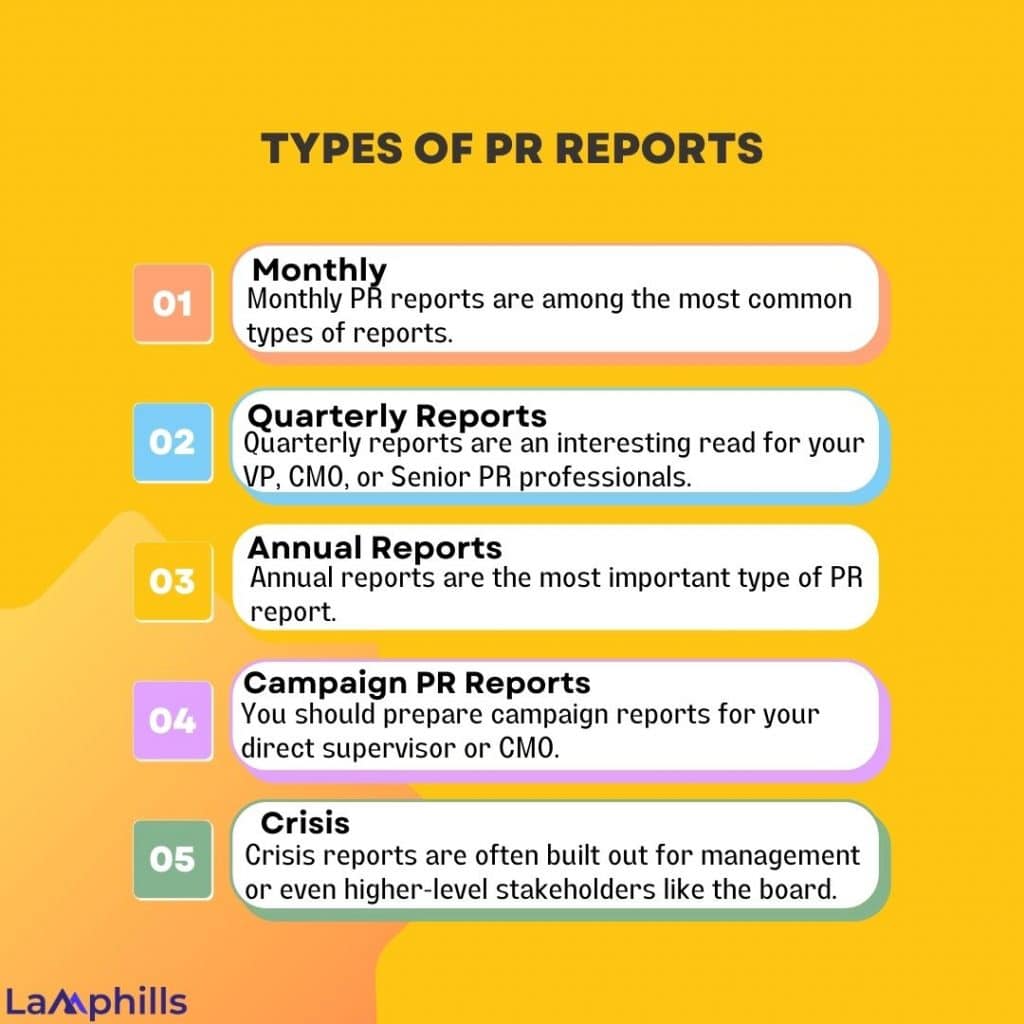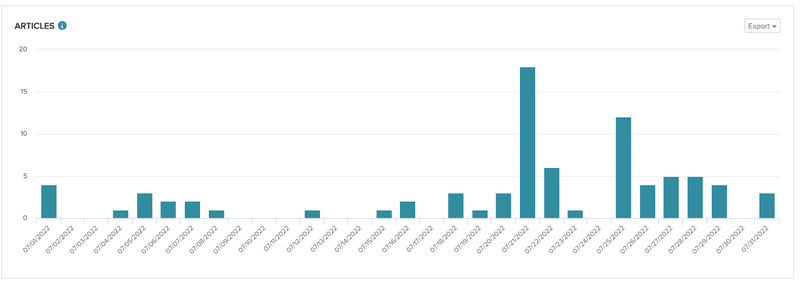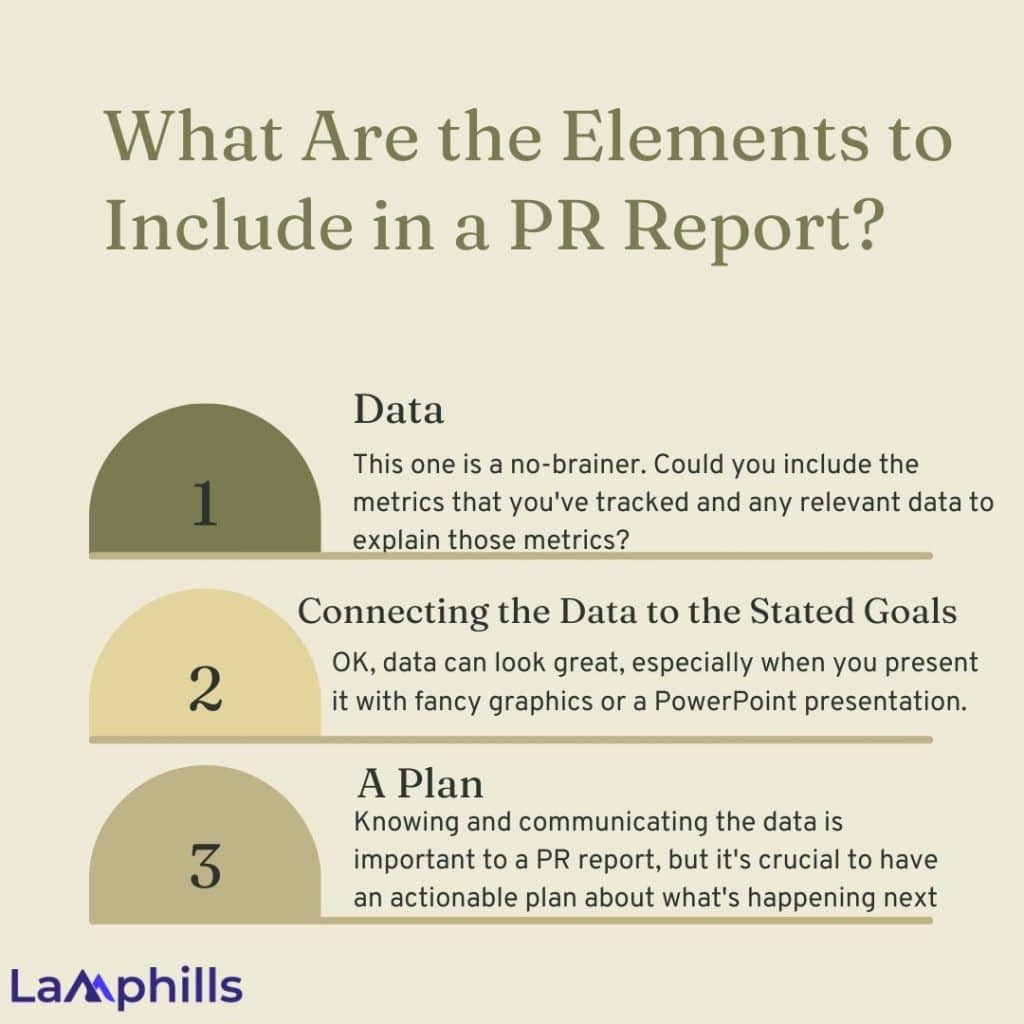Even in 2024, PR managers still face the problem of clients underestimating their work. Those who didn’t have much experience with public relations or had a negative one might feel it is tough to measure the value and impact of PR on their business. That’s where a competent PR report comes in handy.
Public relations have multiple metrics and activities that any PR professional must follow and implement. Crafting press releases, working with the press and influencers, and launching online and offline campaigns and events are only a short list of daily tasks of a PR manager. Tracking media coverage, brand health, sentiments, share of voice, and other metrics is also essential. However, what is equally crucial to performing all the mentioned routines is to analyze all these data and turn them into an understandable PR report.
If you’ve been tasked with writing a PR report and aren’t sure where to start, have no fear. In this article, I will teach you the basics of PR reporting, what to include in a stellar PR report, and how to write one.
Key Points
- A PR report, also known as a PR coverage report, press clippings report, or media coverage report, summarizes the results of a public relations campaign.
- Public relations reports can positively impact a company’s marketing efforts. They may include evaluating campaign effectiveness, accountability and transparency, informed decision-making, demonstrating value, and tracking progress.
- A PR report should include data, a plan, and a way to connect it to the stated goals.
- People make mistakes when writing a PR report, including not writing to the specified goals, neglecting to relate the facts to the tasks being performed, and getting so lost in the numbers that they forget the people behind those numbers.
What Is a PR Report?
A PR (Public Relations) report summarizes the activities, results, and impact of a PR campaign or ongoing PR efforts.
This report tracks a PR professional’s goals, implementation methods, completed activities, and metrics used to measure the progress of their efforts. Essentially, it provides a company, customers, and investors with an overview of a brand’s status and future goals. PR professionals use different reporting methods depending on specific projects, goals, and meeting intervals.
Types of PR Reports
When creating a PR report, the first question you’ll want to ask is: Who’s my audience? For example, is the report for internal leadership, or will it be sent externally to a client and their team? This information will help you determine the type of PR report you need to build.

Other questions you’ll want to ask include:
- Why is it necessary?
- What should the PR report reveal?
- What’s the intended takeaway?
As you answer these questions, consider the most common types of PR reports below.
#1. Monthly
Monthly PR reports are among the most common types of reports. They are great internal tools for sharing with your team, managers, or clients.
The purpose of monthly reports is to ensure your campaigns and PR initiatives are on track. Identify trends to determine what’s working and what may need improving.


#2. Quarterly Reports
Quarterly reports are an interesting read for your VP, CMO, or Senior PR professionals.
If the monthly report is a test, then the quarterly PR report is your end score. Quarterly reports will help you defend your results. You will be able to pinpoint the correlation between the dollars spent on your PR campaign and specific business outcomes. Even if you engage in activities that don’t directly link to sales, you can explain the benefits to the brand you manage.
#3. Annual Reports
Annual reports are the most important type of PR report. For these, your target audience will be a CEO and other C-level managers, the board of directors, investors, and other important stakeholders. This report will help them determine your budget for the following year.
The purpose of an annual report is to showcase your team’s value. Highlight the year’s biggest wins and outcomes with data. This is also an opportunity to identify resources that may need to be included in your future budget, like new hires or additional tools.
#4. Campaign PR Reports
You should prepare campaign reports for your direct supervisor or CMO. The report’s audience depends on the campaign’s size.
Before you launch a public relations campaign, you need to define your goals. Your report will state whether you achieved your goal and what you should improve before the next campaign.
#5. Crisis
Crisis reports are often built out for management or even higher-level stakeholders like the board. The goal of this report is to explain what specific steps your PR team took to reduce the spread of negative sentiment and maintain the brand’s perception during a period of turmoil.
Read also: Best Steps To Effective PR Crisis Management
Why Is PR Report Important

PR professionals write reports to determine whether their methods work as planned and locate areas where they can make improvements that advance their goals. A well-written PR report also serves as evidence to stakeholders that their continued support of a project can benefit their company’s objectives and positively impact revenue. The positive impacts of public relations report on a company’s marketing efforts may include:
- Evaluation of Campaign Effectiveness: PR reports help businesses assess how well their PR campaigns and activities have achieved their objectives. By analyzing metrics and outcomes, companies can determine what worked and what didn’t, enabling them to refine their strategies for future campaigns.
- Accountability and Transparency: PR reports provide a transparent record of PR activities and their outcomes. This accountability is crucial for maintaining trust with stakeholders, including clients, executives, and investors, who need to see a clear return on investment (ROI) for PR efforts.
- Informed Decision-Making: These reports inform strategic decision-making by providing detailed insights into PR campaigns’ results. Businesses can identify successful tactics to replicate and areas needing improvement, thereby optimizing future PR activities.
- Demonstrating Value: PR reports showcase the tangible value of PR efforts. By highlighting media coverage, audience reach, engagement metrics, and other key performance indicators (KPIs), businesses can demonstrate the impact of their PR work on brand awareness, reputation, and overall business goals.
- Tracking Progress: Regular PR reports allow businesses to track progress over time. By comparing data from different reporting periods, companies can identify trends, measure growth, and adjust their strategies accordingly.
What Are the Elements to Include in a PR Report?
When planning a PR report, you should refer back to the original client brief, which identified what the client wanted to accomplish from working with your agency. You can then start collating the information needed in the following elements.

#1. Data
This one is a no-brainer. Include the metrics that you’ve tracked and any relevant data to explain those metrics. It could be as simple as “How many people followed the brand on Twitter between 2012 and 2013?” or something more complicated like “How many people followed us on Twitter after we hired our social media intern Gary?” or “How many people unfollowed us on Twitter after Gary’s grossly offensive typo debacle of May 2013?”

Examples of data to include:
- Website Traffic
- Social media engagement (shares, likes, followers, reposts)
- Reach
- Share of voice
- Media coverage (who is talking about your brand and where)
- Sales conversions
#2. Connecting the Data to the Stated Goals
OK, data can look great, especially when you present it with fancy graphics or a PowerPoint presentation. However, with a PR report, you need to connect the data to your goals. Most PR campaigns will have multiple goals, so ensure that you link the data to each set goal. Those goals could be as simple as increased downloads of a small business contract template or as complex as increased reach over multiple social media platforms.
This can be the complicated part of a PR report. For example, how do you show that increased media coverage is directly linked to an increase in sales? This is where you may need to focus on short-term data. Taking the example mentioned, you could look at sales data in the weeks before the media coverage and the weeks immediately after to show a correlation.
Remember, it’s important to have complete data transparency regarding both your clients and their customers in the data you collect. Make sure you’re open about your methods. This will, in turn, foster a good client relationship.
#3. A Plan
What have you learned from the data? How are you adjusting your strategy or PR campaign knowing what you know now? Who amplified your content and may be open to collaborations in the future?
Knowing and communicating the data is important to a PR report, but it’s crucial to have an actionable plan about what’s happening next. How will you learn, grow, and develop from this information in meaningful ways?
If your quarter or campaign fell short of expectations, talk about why and then explain what you’re going to do differently. Remember, you’re justifying the cost of your services. If you don’t have a great reason why they’re paying you or you can’t easily demonstrate the value of what you’ve been doing, your PR report may need some tweaking. You may not be able to force a perfect outcome, but you can learn from an imperfect one.
PR Report Template
Lamphills PR Report Template
How to Write a PR Report
Your starting point for any PR report is to have a clear idea of the client’s stated goals. Of course, this is something you should understand long before a PR report is needed, but it can also act as the starting point of your report. Here are some steps you can take to write an effective PR report:
#1. Define Your Objectives
Before you start writing your PR report, you need to clarify your objectives. What are the goals and expectations of your PR strategy? How do they align with your client’s or organization’s vision and mission? How will you measure your success and progress? Having clear and SMART (specific, measurable, achievable, relevant, and time-bound) objectives will help you focus your report on the most important and relevant outcomes and indicators.
#2. Select Software
Before writing a PR report, determine the type of PR tools that can help you provide updates to your project effectively. Many PR professionals choose to use software that creates visually appealing results and streamlines their formatting process. Others find simple word-processing documents sufficient for relaying their findings.
#3. List the Things You’ve Done and the Ones You Still Have to Do
Depending on the type of report you’re writing, you should begin by listing the tasks you’ve finished in the last month, quarter, or year. To make the text more accessible and organized, it’s also crucial to incorporate dates and figures where appropriate, as well as bullet points for readability. For example, in an event planning project, you can report that you were able to secure three new sponsors, each contributing $1 million.
#4. Structure Your Report
Your PR report should have a clear and logical structure that guides your audience through your key points and findings. To ensure its comprehensiveness, it should include an executive summary, introduction, activities, results, insights, and recommendations. The executive summary should provide a brief overview of the objectives, activities, results, and insights for the reporting period. The introduction should explain the objectives, scope, methodology, and background for your PR strategy.
Under activities, you should describe the PR tactics implemented, including media relations, social media, events, content creation, and influencer marketing. Results should present data and metrics on how well objectives were achieved and performance against benchmarks or competitors. Insights should discuss takeaways, learnings, challenges, and opportunities from data analysis and results. Finally, recommendations should list the next steps or improvements based on insights and results.
#5. Write Impactfully and Clearly
You should write your PR report impactfully and clearly. Make use of action verbs and the active voice, speak clearly and succinctly, and stay away from acronyms and jargon. Draw attention to your accomplishments, but don’t forget to admit your shortcomings and difficulties. Give your metrics and data some background and explanation, and demonstrate how they connect to your goals and plan. Employ anecdotes, illustrations, quotations, or testimonies to support your arguments and give them more weight and feeling. To make your writing easier to read and scan, use bullet points, headings, subheadings, and white space.
#6. Evaluate and Enhance Your Report
Evaluate and modify your PR report before publishing the final version. Verify the quality, consistency, and completeness of your report. Ensure that your measurements and data are accurate, valid, and up to date. Check your report for spelling, punctuation, grammatical, and formatting mistakes. Seek input from stakeholders, clients, or coworkers, and take into consideration their recommendations and remarks. Make sure the tone and brand guidelines of your report are in accord with each other. Make sure your report has a polished, eye-catching structure and design, and decide which format and distribution method would work best for your target audience.
What Are the Most Common Mistakes People Make When Writing a PR Report?
These are just a handful of the most common mistakes people make when writing PR reports.
#1. Not Writing Your Report to the Specified Goals
Yeah, we’re harping on this, but it’s the point of an entire PR report. If you had a specific goal in mind for your quarter or your campaign and you report on an entirely different metric, you’re going to look silly—not just foolish but unprofessional.
#2. Neglecting to Relate the Facts to the Tasks Being Performed
Don’t sell yourself short. Explain how your work correlates to the progress being made. A PR report is not the time for humility.
#3. Getting So Lost in the Numbers That You Forget the People Behind Those Numbers
Including things like reviews, comments, feedback, testimonials, and customer engagement is important for telling a complete story. Remember, your audience isn’t made up of robots. It’s tempting to think about PR in terms of the masses, reach, and impressions, but keep in mind that those are actual people. How are people being influenced by your PR?
Is a PR Report Different From a Clipping Report?
Yes, a PR report is different from a clipping report. A PR report summarizes the results and impact of PR activities, while a clipping report compiles media mentions about a brand.
PR Reports Are All About Communication: Bottom Line
The foundation of PR is communication, whether with clients or through social media or the media. Particularly if you have to submit reports regularly, you can display your PR report with elaborate visuals or something more straightforward, like the best free PDF editor. It doesn’t matter the medium you use. What’s important is that your PR report demonstrates that you are achieving results and meeting goals.

A good PR report should impress your clients, even when all their stated goals have not been met. By owning any failures or weaknesses, you can instill confidence in them using your agency. But be sure to focus on the positives. You may have fallen short in one area or with one goal, but you may have achieved success in other areas. The most important thing to remember is that any PR report should be honest and transparent.
Similar Articles
- HOW TO WRITE A PROFESSIONAL BACKGROUND: Detailed Guide With Free Templates
- Press Release Submission Sites: Top 50 Press Release Submission Websites 2024 (+ FREE TIPS)
- MEDIA ANALYSIS: How To Conduct An Effective Media Analysis
- How To Do PR Like A Pro (Expert Tips & Detailed Guide)






